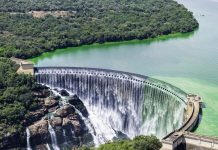Forests have always been one of Europe’s most critical natural allies in the fight against climate change, covering about 40% of the European Union’s land and absorbing roughly 10% of the bloc’s greenhouse gas emissions from human activity between 1990 and 2022
New research is now showing that this key carbon sink is weakening, and the decline is accelerating.
A recent study published in Nature, led by the European Commission’s Joint Research Centre, shows the increasing threat to Europe’s forest carbon sink and highlights the steps needed to improve forest management and enhance monitoring systems. The findings create substantial implications for the EU’s climate goals, including its 2050 target for climate neutrality.
A drop in carbon absorption
According to the latest data from the European Environmental Agency (EEA), Europe’s forests absorbed about 27% less carbon dioxide between 2020 and 2022 compared to the previous decade.
The 2025 greenhouse gas inventory suggests the downward trend is continuing at a faster pace. Several factors are creating this decline. Logging activity has increased, reducing tree cover and long-term carbon storage. Meanwhile, climate change is intensifying weather extremes, such as heatwaves and droughts, which slow down tree growth. At the same time, forests are facing more frequent and severe natural disturbances like insect infestations, wildfires, and widespread tree mortality.
Better and starter forest management
While reducing overall greenhouse gas emissions is still the most essential tool to combat climate change, the study shows how better forest management is also necessary. Adjusting tree harvesting practices and increasing forest resilience to climate extremes could help restore the carbon sink function over time.
Resilient forests are more likely to survive climate stress and continue absorbing carbon dioxide. Mixed-species forests, for example, have shown greater tolerance to disruptions and hold more substantial carbon storage potential. Encouraging biodiversity-friendly forest management could therefore be a key part of the solution.
Creating better knowledge
The research identifies essential gaps in how Europe monitors and models forest carbon storage. One of the top priorities is improving the accuracy and frequency of data collection, particularly tracking how carbon moves between soil, vegetation, and the atmosphere. More precise carbon flux measurements are vital for making timely policy decisions.
It is also important to forecast how climate change and extreme weather events might impact forest carbon sinks in the future. Many EU countries currently rely on outdated or periodic forest inventories that do not capture rapid changes in forest health.
To close these gaps, scientists are calling for a stronger use of high-resolution satellite imagery, airborne data, and expanded ground observation networks. Improving transparency and standardisation in forest data across countries is also necessary.
Sustainable forest future
The study makes it clear what future actions are necessary, emphasising the need for integrated policies that align climate and environmental objectives. Scaling up research efforts, incorporating socio-economic modelling, and anticipating unintended consequences, like how afforestation might affect local water resources, are all part of the strategy.
With the right investments in monitoring, research, and sustainable management practices, the EU still has an opportunity to reverse the decline of its forest carbon sink.











